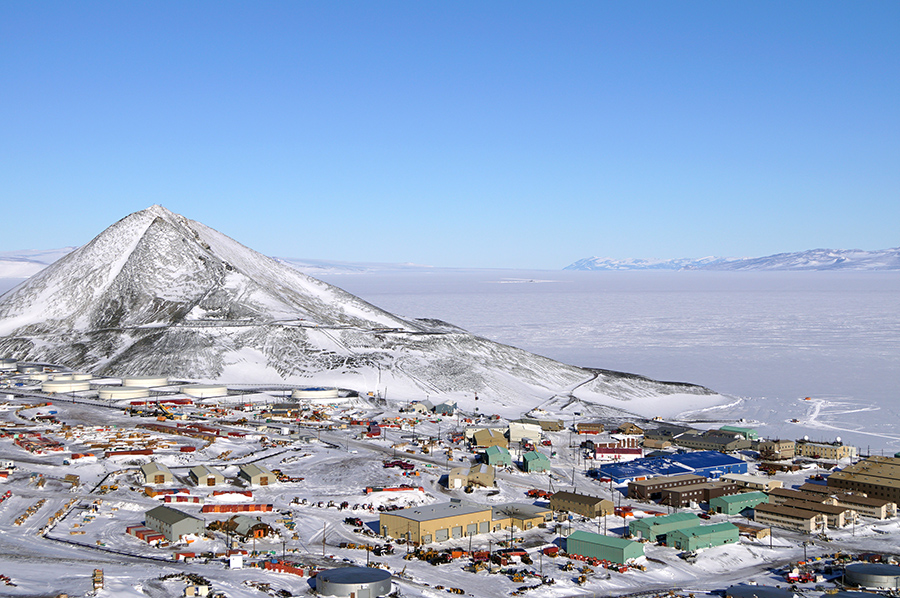The Antarctic Sun turns 25The U.S. Antarctic Program’s news site shares Antarctic research and logistics with the worldPosted October 26, 2022
This year marks the 25th anniversary of The Antarctic Sun, the U.S. Antarctic Program’s website for Antarctic news and information. The Antarctic Sun is the latest iteration of a news outlet for the Antarctic community produced by the U.S. Antarctic Program. The program’s efforts to share news with the Antarctic community began in 1957 during the International Geophysical Year, a worldwide effort to study Earth and the Sun that saw the birth of many national Antarctic programs. The U.S. Navy provided logistical support to the U.S. Antarctic Program during the IGY and the decades that followed. Navy servicemembers published the McMurdo News during the IGY, a brief news report for residents of McMurdo Station. From 1960 to 1980, the newspaper was published so irregularly that it earned the playful name The McMurdo Sometimez. The paper’s name was changed to The Antarctica Sun Times in 1980, a reference to the fact the sun is always up during the Antarctic summer. Editions published during the winter of 1990 were known as The Antarctic Nite Times. In 1995, newspaper staff began using computers and digital cameras for production and the paper was produced at McMurdo every few weeks during the austral summer. Stories chronicled life on station, gave readers updates on Antarctic science, and provided news from the National Science Foundation, which manages the U.S. Antarctic Program. In 1997, the paper’s name was shortened to The Antarctic Sun and production was handed off to civilian contractors who took over the program’s logistics from the Navy. Alexander Colhoun served as the first staff journalist and editor and the paper was printed every 1-2 weeks during the austral summer season from 1997 to 2007. At that point, the paper transitioned to an online platform and expanded its audience to anyone with an interest in Antarctic science. The site started publishing stories year-round in 2008 and has been an important source of Antarctic news ever since. Today, most Antarctic Sun stories focus on U.S. Antarctic Program science, from glaciology and marine biology to astrophysics and ocean science. But content also covers life at all three U.S. research stations (not just McMurdo), station and research vessel news and updates, and profiles of scientists and support staff. As the site has evolved and readership has grown, multimedia storytelling has become central to The Antarctic Sun. Videos give readers a first-hand look at Antarctic science and life on station, and infographics help illustrate scientific concepts. In 2016, The Antarctic Sun Podcast was introduced by then-editor Mike Lucibella. Episodes give listeners a behind-the-scenes look at what it takes to support science at the bottom of the world, covering everything from feeding the large population of McMurdo Station to how support staff conducts search and rescue operations in one of the harshest environments on Earth. The U.S. Antarctic Program is proud to celebrate this milestone and we look forward to many more years of sharing Antarctic research with the world. |



For USAP Participants |
For The Public |
For Researchers and EducatorsContact UsU.S. National Science FoundationOffice of Polar Programs Geosciences Directorate 2415 Eisenhower Avenue, Suite W7100 Alexandria, VA 22314 Sign up for the NSF Office of Polar Programs newsletter and events. Feedback Form |

